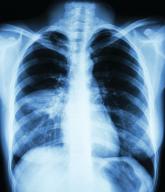News

REPROVE: Ceftazidime-avibactam noninferior to meropenem for nosocomial pneumonia
- Author:
- Shannon Aymes
The REPROVE trial demonstrated ceftazidime-avibactam was noninferior to meropenem for nosocomial pneumonia.
News

New multi-analyte blood test shows promise in screening for several common solid tumors
- Author:
- Shannon Aymes
Newly developed CancerSEEK utilizes combined assays for genetic alterations and protein biomarkers and has the capacity to identify the presence...
News

OSA home testing less expensive than polysomnography
- Author:
- Shannon Aymes
OSA patients demonstrated similar results for quality of life, blood pressure, and CPAP compliance, whether they had been diagnosed with HRP or...
News

Varenicline, bupropion not tied to significant increase in neuropsychiatric events in smokers
- Author:
- Shannon Aymes
Key clinical point: Neuropsychiatric adverse events were not significantly increased in smokers treated with varenicline or bupropion. Major...
News

Study of LGBQ youth highlights behavioral health differences in each group
- Author:
- Shannon Aymes
Mental health symptoms and severity differed across a cohort of lesbian, gay, bisexual, and questioning (LGBQ) adolescents, highlighting the need...
News

Study of LGBQ Youth Highlights Behavioral Health Differences in Each Group
- Author:
- Shannon Aymes
Key clinical point: LGBQ groups demonstrate differences in mental health symptoms and severity.
News

‘Shark tank’ panel probes GI innovations at AGA Tech Summit
- Author:
- Shannon Aymes
- Ted Bosworth
News

Gait speed hones risk stratification of elderly heart failure patients
- Author:
- Shannon Aymes
Key clinical point: Gait speed was independently associated with hospitalization and death, and aided in risk stratification of elderly patients...
News
Among hospitalized patients with diabetes, 25% have undiagnosed diabetic retinopathy
- Author:
- Shannon Aymes
Key clinical point: Among hospitalized patients with diabetes, 25% had undiagnosed diabetic retinopathy and 19% had undiagnosed sight-threatening...
News

Contraceptive ring, implant, and DMPA tied to lower sexual interest
- Author:
- Shannon Aymes
Compared with women using copper IUDs, women using depot medroxyprogesterone acetate, the contraceptive ring, and the implant were more likely to...
News
Sex assault by intimate partners as distressing as stranger attack
- Author:
- Shannon Aymes
Sexual assault by an intimate partner was associated with a similar level of psychological distress and a greater likelihood of extragenital...
News

Accumulated victimization tied to depression, PTSD in LGBT youth
- Author:
- Shannon Aymes
Key clinical point: Understanding the experiences of LGBT youth and trajectories of victimization can lead to interventions that might decrease...
News

Tenofovir resistance far higher than expected
- Author:
- Shannon Aymes
A higher prevalence of tenofovir resistance was identified in patients with HIV infection living in low- and middle-income settings and with lower...
News

Antidepressant use in children, adolescents may double aggression, suicidality risk
- Author:
- Shannon Aymes
Key clinical point: Meta-analysis finds increased risk of suicidality and aggression in children and adolescents taking certain antidepressants....
News

Disclosing both heart, Alzheimer’s risks during APOE testing found safe
- Author:
- Shannon Aymes
Key clinical point: Anxiety and depression did not increase with disclosure of pleiotropic genetic information during genetic testing for...
